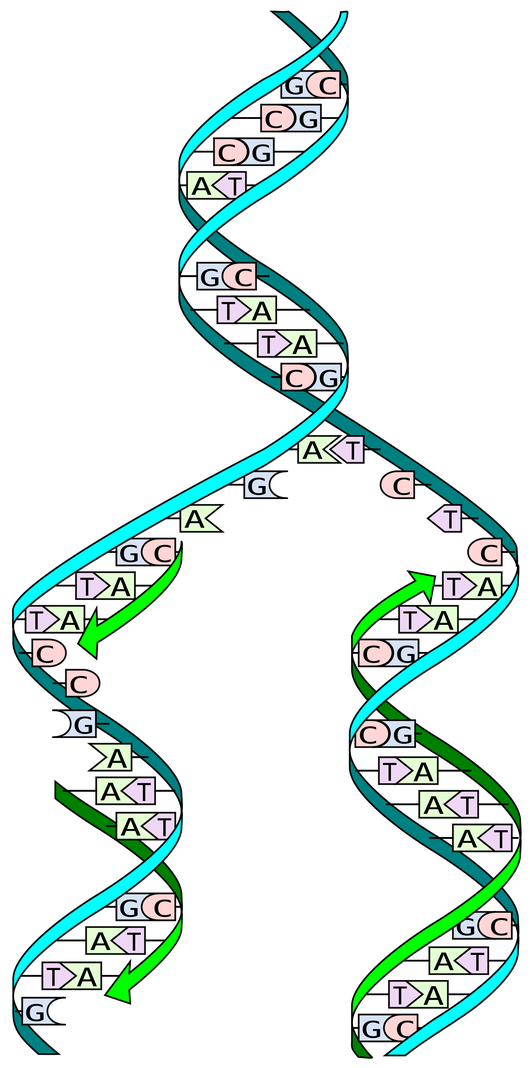DNA replication is the process by which DNA in the cell is duplicated; one of the resulting copies will be inherited by each of two daughter cells following cell division.
In any form of DNA replication, the double helix is "unzipped," and then both sides of the DNA molecule are used as "template strands" by DNA polymerase for creating the complementary strand of each unzipped strand, as shown below.

DNA replication always proceeds by reading from the 3' end to the 5' end of the template strand, which means that when DNA is unzipped, one of the strands must be traversed backwards. This process is considerably more complicated in eukaryotes than in prokaryotes. In the latter, replication usually begins in only one location and then proceeds on both strands in opposite directions around the circular chromosome; however, the replication of eukaryotic chromosomes relies on multiple different replication sites.